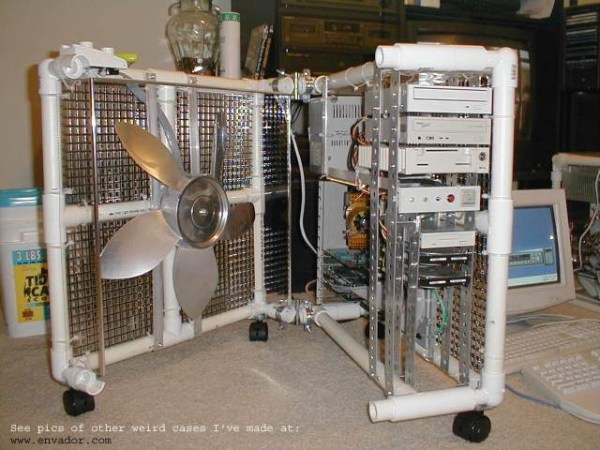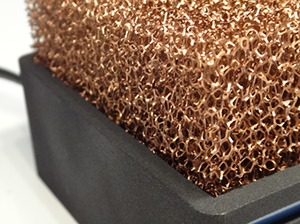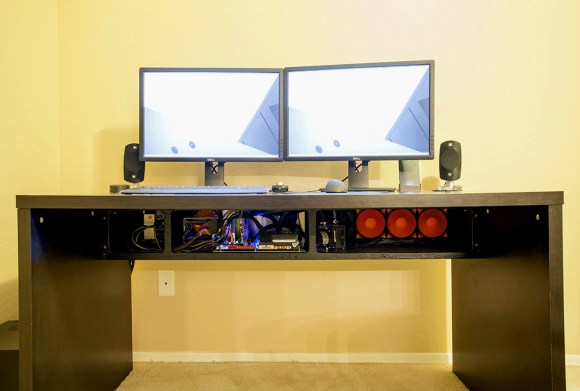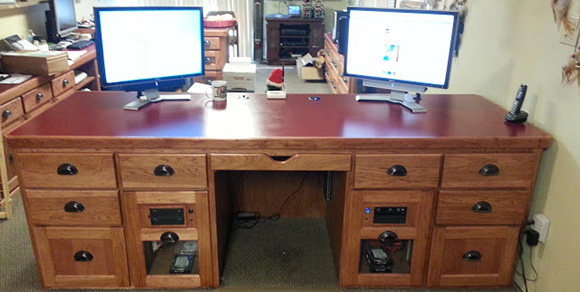Sure, it’s a great idea to keep your computer components cool…. but why? PC components consume energy and in doing so they generate heat. That heat can reduce overall system performance or even damage specific parts. You’ve certainly noticed those huge aluminum finned heatsinks covering critical components in your PC. They are there for a reason, to keep things cool. Most PC’s have at least one fan, if not several, usually only a few inches in diameter. If a small fan does an okay job at cooling a PC, how would a large fan do….. we’re talking a really large fan? [Envador] wanted to find out and made a PC case with the largest fan possible.
Looking at the photo it is pretty obvious that PC case frame is fabricated from standard PVC piping. The side of the case is hinged to allow access to the internal components. That huge set of blades started out as an off-the-shelf box fan. It was taken apart and mounted directly to the PVC case door. It wouldn’t make too much sense to have side panels on this case since the fan is so large. So, instead of solid sides [Envador] used chrome-plated plastic grills that are usually reserved for fluorescent ceiling lights. Perforated metal strapping holds all the drives, power supply and mother board in place.
Unfortunately, [Envador] doesn’t give any before/after temperature data but states that the PC tops out at 95°F and he hasn’t had any problems with computer performance.















